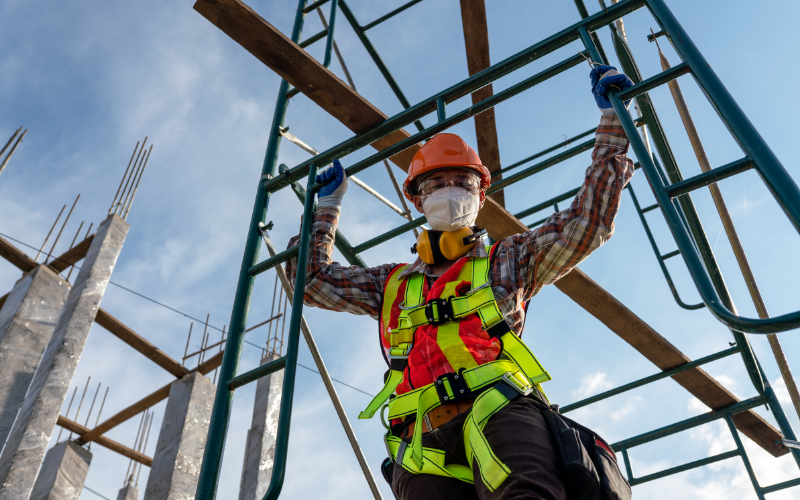
Before using your fall protection equipment, you need to inspect it for deficiencies. Even small amounts of damage can affect your protection in a big way. Damaged or defective gear should immediately be removed from service, especially if it’s been used in a fall before, because it won’t protect you as it did before. We have an overview of areas you should look over before donning your gear and working at heights. For harnesses and other fall protection equipment, it’s helpful to think of them as several parts rather than a single piece of equipment. With this in mind, here’s how to approach your inspection.
Look at the Tagging System and Product Labeling
If the instructions for your harness are readily available, make sure you’ve read and understood them before using the harness. If you’ve lost the instructions, many manufacturers have them available for download on their websites. The fall protection harness itself must have a tag identifying the harness, model, date of manufacture, manufacturer name, limitations, and warnings. This label should be legible, but if it isn’t readable or is missing, the harness should be removed from service. Remove it if it’s past its service life regardless of other damage or use.
Is the Impact Indicator Deployed?
The most important feature of the harness is one of the first things you should inspect, and this inspection is straightforward: is the indicator deployed or not? If the impact indicator has been tripped, the harness has likely been subjected to a fall and must be removed from service, even if the rest of the harness looks perfectly fine.
Look Closely at Webbing and Stitching
When inspecting webbing, grab it in your hands and bend it, checking both sides for damage and cuts—these generally won’t show up easily without a close visual inspection and will require more handling. During visual inspections, look for cuts, broken fibers, deterioration, modifications, fraying, uneven thickness, and hard or shiny spots. When looking at stitching, look for missing, pulled, or cut stitches, as well as any that are hard, shiny, or discolored. Pay attention to areas that see a lot of friction, like where buckles or D-rings rub against the webbing or stitches that can abrade or fray them.
Check the Metal Hardware
Check metal hardware, including buckles, grommets, D-rings, and other components. These parts should be free from damage, alterations, and contamination—think deep rust, corrosion, sharp edges, cracks, wear, and deformation. Even if the rust isn’t extensive, potential damage could still exist, so at the very least, set the harness aside. D-rings should pivot freely, and buckles should connect and adjust properly.
Destroy and Replace Anything Questionable
If anything comes up during your inspection that forces you to take your gear out of use, replace it immediately. Don’t work with worn or damaged equipment, and don’t leave it where it could be mistakenly used. Your PPE can only protect you as long as it’s in good working order and used properly. Harnesses and safety lanyards cannot be repaired; They should be rendered un-usable, typically by cutting the straps on harnesses, and the hooks off of lanyards.
However, many types of retractable lifelines can be removed from service and sent to the manufacturer or authorized service and repair center. In some cases, they can be rebuilt with new internal components, tested, and returned. This is NOT something you should try to do yourself.
Properly Clean and Store Your Gear
To spot-clean your safety harness, wipe off surface dirt with a sponge full of water. For deeper dirt, use water and a mild detergent before wiping, drying it with a clean cloth. Hang it up to fully dry, away from excess heat, sunlight, or steam. Store your gear as neatly as possible. Storage areas should be clean, dry, cool, and dark, and your harness shouldn’t be subjected to fumes, heat, direct UV light, sunlight, corrosive elements, and batteries. The area should be free from dust, dirt, oils, and moisture, all of which can degrade your harness.
Remember: Your Inspection is Crucial
OSHA specifies that your annual inspection must be done by a competent person. This person is well-trained and knows what to look for during inspection. Inspections aren’t an inconvenience or a formality: it’s the difference between getting home at the end of the day or getting injured or killed on the job.
Your vendors are also a valuable source of information. PK Safety’s safety experts have personally vetted the products we sell. We promote only the gear that we would trust to keep you safe on the job, and we can answer your safety and equipment questions. Our informative website and blog will always be available, and you can contact us online or by phone at 800.829.9580 to talk directly to a safety expert.
